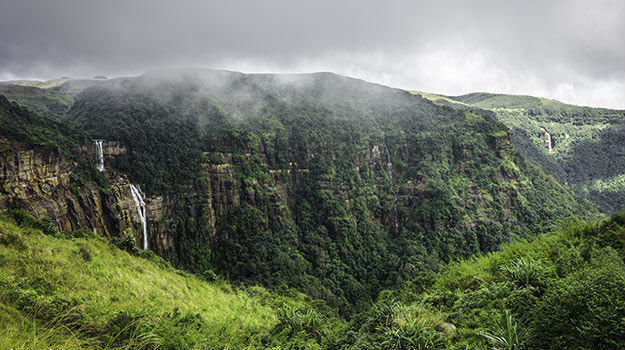Cherrapunji Travel and Tourism Guide
Long ago, the rainy land of Cherrapunji was called Sohra, which the Britishers pronounced as ‘Churra’. Tourists from across the country later named it Cherrapunji, which translates to mean ‘land of oranges’. One can trace the history of the Khasi tribe residing in this area dating back to 16th century. The local residents of Cherrapunji were ruled by Syiems of Khyriem in the Khasi hills. Tirot Sing was the last important Syiem of this area, who later acknowledged to the Britishers in 1883. The monument of David Scott, a British Administrator in North Eastern India between 1802-1831 attracts many tourists in Cherrapunji. Cherrapunji holds two Guinness world records, one for the maximum amount of rainfall in a single year, which was 26,471 millimetres (1,042.2 inches) of rainfall between August 1860 and July 1861. And it also holds the record for the maximum amount of rainfall in a single month, which was 9,300 millimetres (370 inches) in July of 1861.







